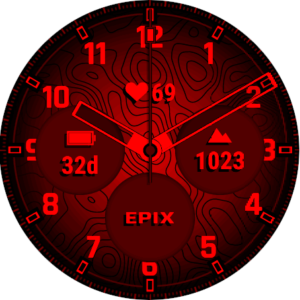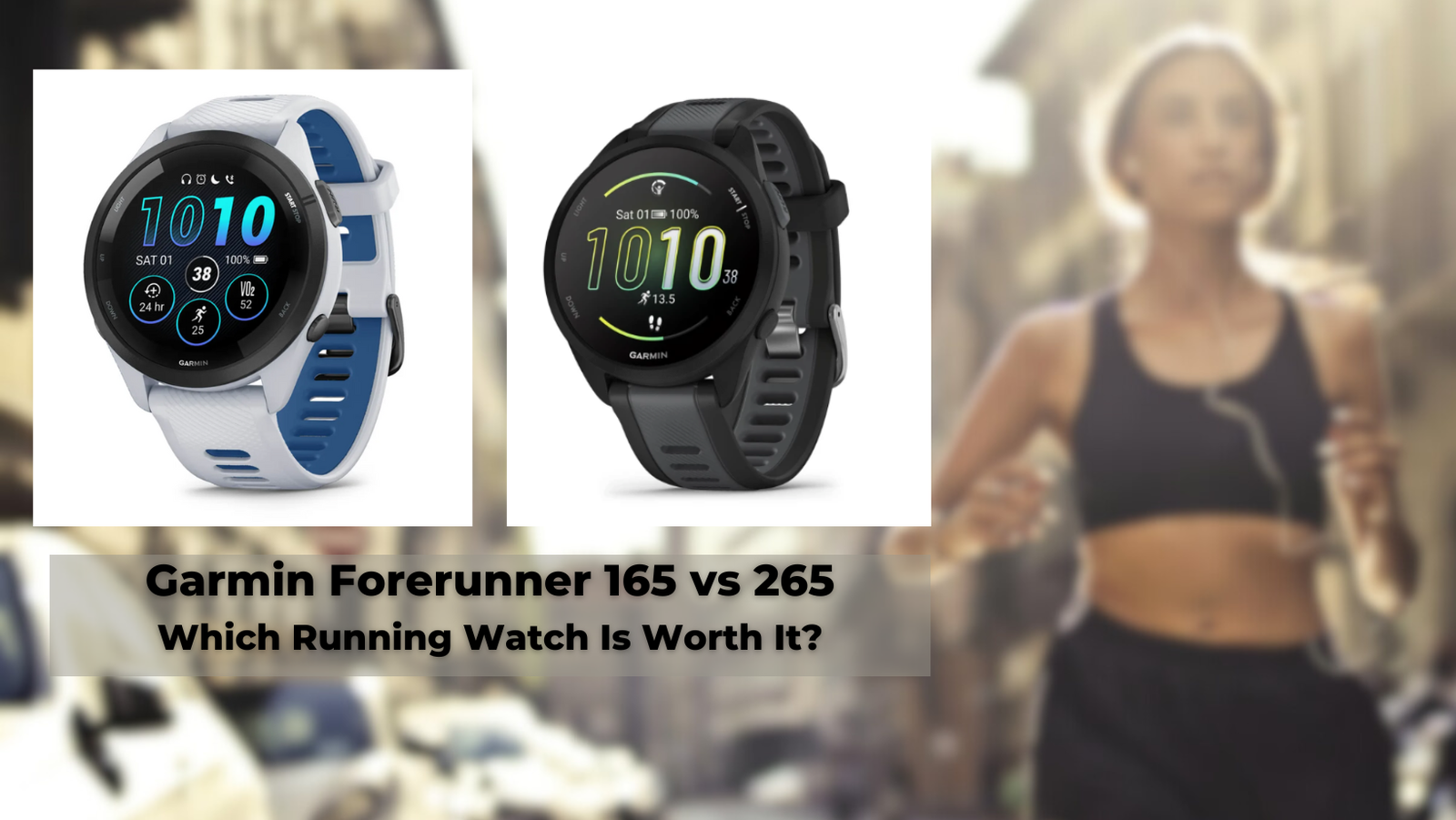Garmin recently released a new entry level Forerunner – the 165. If you’re in the market for a running watch with an AMOLED screen, you’re probably comparing the Forerunner 165 vs 265.
There’s a lot of overlap in features, and the two watches are similar. Either one will ultimately be a fine choice for tracking your runs and supporting your training.
But is the Garmin Forerunner 265 worth the premium price? Or should you save a few bucks and stick with the Garmin Forerunner 165?
Let me break down the similarities and differences – and then you can decide for yourself.
The Short Version
Is the AMOLED display – which is more akin to a traditional smartwatch – the most important feature to you? Then save a little money and choose the Forerunner 165. It’s missing a few fitness features, but it will do more than enough for most athletes.
Not really interested in the AMOLED display? Go with the Garmin Forerunner 255. Currently, it’s probably the best value among Garmin’s Forerunners. You get almost all of the premium features of the 265, but you’re paying a price that’s much closer to the 165.
If you want the AMOLED display and either a) you’re a triathlete who needs to track multisport activities or b) you want the latest performance metrics like training readiness … you should splurge on the Garmin Forerunner 265.
Price Difference Between the Garmin Forerunner 165 vs 265
Before we get into the similarities and differences, we need to start with the price point.
Years ago, the No products found. was an affordable, mid-tier running watch. Since then, the Garmin Forerunner 255 and 265 have gotten increasingly expensive.
With the introduction of the Forerunner 165, Garmin has returned to offering a decent, mid-tier watch that won’t break the bank. It comes in two versions.
The non-music version retails for $249.99. If you opt for the music enabled version, the MSRP goes up $50 to $299.99.
The Garmin Forerunner 255 retails for $349.99 / $399.99. But since it’s an older watch, you can typically find it for less than $300. If you’re happy with the MIP display, this makes it a pretty good value.
Meanwhile, the Garmin Forerunner 265 retails for $449.99. It comes in two sizes, but the price is the same either way.
Note that the Forerunner 265 always comes with music capabilities. There’s no option to get a cheaper version without music.
The difference between the two watches is $150 to $200 – which is pretty significant at this price point. So you should be asking yourself, what does the Forerunner 265 offer and is it worth the premium price?
Then again, if price isn’t an option, you might as well get the Garmin epix Pro (Gen 2). It’s their top of the line running watch with an AMOLED screen – but it’ll set you back around $1,000.
Similarities Between the Two Garmin Forerunners
Before we get into the differences between the two watches, I can’t stress enough how similar they are.
They are both effective GPS running watches and you can use them to track your running. The results are logged in Garmin Connect, where you can analyze the data on your computer or your mobile device. You even have access to wrist-based running dynamics like stride length and vertical oscillation.

They have the same 4th generation Elevate heart rate monitor, and you’ll get access to nifty new health metrics like heart rate variability status. They’ll also track your sleep, including naps, and give you a morning report of with a quick look at some health stats.
Both watches have a bright AMOLED display – which sets them apart from the Forerunner 55 and 255. This was introduced with the 265, and the 165 is now the lowest priced watch to offer this screen.
They also have fancier smartwatch features than the cheaper Forerunner 55 – like Garmin Pay and image notifications on your wrist. And you have access to breadcrumb navigation and trail running features.
They’re both capable of playing music, podcasts, or audiobooks. Keep in mind this is optional on the 165 – but it’s available on both watches. The battery life is also similar.
For more detail on how the Forerunner 165 is better than the 55, check out this guide. All of those differences are also – for the most part – similarities between the 165 and the 265.
The bottom line is that if you’re comparing the Garmin Forerunner 165 vs 265 – you’ll find a lot of similarities.
What Are the Hardware Differences?
However, there are a few things that set the two watches apart.
In terms of hardware, the most significant difference is probably the amount of memory. The 165 only has 4gb of memory, while the 265 has 8gb. In either case, that’s a lot of memory to hold music, but more is better, right?
The other significant difference is that the Forerunner 265 has multi-band GPS. This is a new feature on some of the newer Garmin watches, but it was not ported down to the 165. Multi-band GPS can help improve GPS reliability in certain settings – like dense urban cities or deep in the woods. For most people, it’s not a must have. But it is a ‘nice to have.’
Although the two watches share the AMOLED screen, the Forerunner 265 is built with brand name Gorilla Glass. The Forerunner 165 is made with regular chemically strengthened glass. The two are similar, but the Gorilla Glass is, technically, “better.”
The final difference – which is a matter of preference – is size.
- The Forerunner 165 comes in one size – 43mm and a 1.2″ screen.
- The Forerunner 265S is a little smaller than that – 41.7mm with a 1.1″ screen.
- Meanwhile, the Forerunner 265 is larger – 46.1mm with a 1.3″ screen.
So the 165 kind of sits in the middle of the two options for the 265. It’s not quite as small as the 265S or as big as the regular 265.
What Are the Feature Differences?
Then there are some feature differences between them. Although the two watches are similar, and the 165 has a lot of the premium features of the 265, Garmin left a few features off of the 165 to maintain a separation between the two watches.
Features for Triathletes
Perhaps the biggest feature difference between the two watches is that the Garmin Forerunner 265 includes a multi-sport activity. This feature is geared towards triathletes who are likely to combine running, biking, and/or swimming during the same activity. It also has a unified training status that takes into account multiple kinds of activities.
This feature used to be reserved for the higher end Forerunners (like the 745 or the 965), but starting with the Garmin Forerunner 255 the triathlete features migrated down to the 2XX models.
Features for Training and Recovery
In terms of training information, four features that are lacking from the 165 are performance condition, training load, training load focus, and training readiness.
- Performance condition tells you at the start of every run if your heart rate is higher or lower than expected.
- Training load gives you a snapshot of how much you’ve trained recently – and whether that’s higher or lower than your chronic training load.
- Training load focus helps you understand whether your training is varied enough between low and high intensity.
- Training readiness is a metric that combines several others into a score to give you an idea of whether you’re ready to tackle serious training.
Collectively, these four metrics help you think about the big picture while evaluating whether or not your training is appropriate. Of all the training and recovery metrics, I think heart rate variability status is the best – and this is available on the Forerunner 165.
But these four features are nice to have, as well. And they set the Forerunner 265 apart.
Cool, Gimmicky Features
Finally, three other minor features included on the 265 are the on screen animations, the ability to race a virtual partner, and red shift mode. They’re a little gimmicky – but they are kind of cool.

With on screen animations, you can start a yoga activity or something similar. The different positions are animated on your watch. Of course, the only problem is it’s hard to look at your watch and do the activity at the same time.
Racing a virtual partner lets you input a target time and then see, visually, whether you’re ahead of or behind that time as you run. It’s a little silly, but it’s one way to gamify your runs and keep them interesting.
With red shift mode, you can change the color of the watch face and reduce the contrast. It helps reduce the blinding brightness of an AMOLED screen in a dark room.
Garmin Forerunner 165 vs 265: The Bottom Line
So those are the key differences you’ll find if you compare the Garmin Forerunner 165 and the 265.
At the end of the day, they are very similar. They’re both relatively affordable, entry or mid level running watches with AMOLED screens.
For many people, the Forerunner 165 will be plenty good enough. It supplies most of the premium features that are available on the 265 – but not quite all of them.
The key reasons you may want to choose the 265 over the 165 are:
- You’re a triathlete. Definitely get the 265.
- You use a ton of space for music. Get double the memory.
- You run in a place where multi-band GPS would make a huge difference.
- You absolutely need the latest, greatest training metrics.
If you fit one of those criteria, and you don’t mind spending an extra $150 to $200, then go pick up a Garmin Forerunner 265.
If you’re not fully sold on either watch, take a look at these other comparisons to help you pick the right entry level or mid-tier Garmin Forerunner:

This is an amazing review and exactly what I was hoping to find. Thank you!